The purpose is to build a prototype of a transmitting antenna with very good directivity properties. Possible applications are related to the possibility of establishing point-to-point communication between distant locations, with high chance of not being intercepted. Other applications concern with the transfer of electromagnetic energy with very little dispersion. This research framework is totally opposite to the more common one, which is aimed to transmit signals all around, in order to reach as many targets as possible.
In particular, the 3D printed piece represents a dielectric part of the apparatus. Its shape is crucial and depends on the characteristic electrical properties of the printing material used (see [1]). The signal emitted from the antenna passes through the dielectric and follows specific patterns. Therefore such a dielectric component must be completely filled. This, unfortunately, has negative effects on costs and execution times. There are however advantages in using the 3D printing, since it is certainly a competitive choice when producing single pieces and it allows for fast corrections of the prototype, on the base of conclusions deduced from the outputs of practical measures conducted on the antenna.
The so called near-field is the most delicate part of an electromagnetic wave. Thus, the study of an emitting device strongly depends on a good description of what exactly happens in the immediate neighborhood of the resonant area. Experiments on these type of directive antenna are supported by a theoretical background (see [2]) and by numerical simulations with a non-commercial software. The major difficulty relies in how treating boundary conditions in the proper way. In this situation, it is clear that an optimal outcome may be only achieved by reiterated comparisons between the computational model and the results of real experiments.
Daniele Funaro
Dipartimento di Fisica, Informatica e Matematica
Università di Modena e Reggio Emilia, 41125 Modena, Italy
http://morespace.unimore.it/danielefunaro/
References
[1] E. Huber et al., Dielectric Property Measurement of PLA, 2016 IEEE Int. Conf. on Electro Inf. Tech.
[2] D. Funaro, Electromagnetism and the Structure of Matter, World Scientific, Singapore, 2008, ISBN: 978-981-281-451-7.


